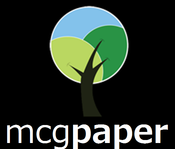How To Make - Shrink Art - Incredible Shrinking Photograph Article
How To Make Shrink Art
The Incredible Shrinking Photograph By: Elinor Stecker-Orel
Copyright (c) PhotoHighway.com™, Inc. all rights reserved.
It’s one thing to print digital images on paper, but it’s exciting to explore other surfaces. It’s increasingly possible to print where no inkjet printer has ever gone before. That’s one of the fascinations the digital darkroom holds for me, both as an artist and as a craftsperson.
My latest discovery is plastic. Plastic that starts out as a thin, flexible sheet, then shrinks and becomes thicker and rigid. Perhaps you’re aware of shrink-art plastic--Poly Shrink, ShrinkyDink, and other brands, which you can draw or color on; then you put it in the oven and bake it until it gets smaller and smaller and harder and harder. Great fun for making jewelry, key chains, zipper pulls, and other colorful items. But until very recently, you could not use your inkjet printer to add your photographic images.
That’s why Super Color Shrink - Shrink Art captured my attention. This incredible shrinking plastic does work with a printer, letting you take your images to a new dimension. Baking shrinks and hardens the material into a firm plastic, about 1mm thick. Sort of magical.
Begin by choosing a picture that is relatively light-toned– or lighten it on the computer-- since the colors will darken when the plastic shrinks. The instruction sheet warned me about this, but I did not think about gray areas, which became almost black in my picture of the lotus.
Do whatever enhancements you want to do in your image-manipulation program. Then resize the picture, bearing in mind that the image will shrink to about one-half the original size in each dimension.
It's a time and material-saver if you fill the page with pictures and print them all at one picture at a time. I did it by opening a new, blank page sized to 8 ½ X 11 inches. If your editing software permits, this is a good way to go. Otherwise, you'll find other suggestions for printing multiples in Multiple Digital Images on a Page . Copy and save the image onto the blank page, making several copies of the same picture or using different pictures. You'll be able to raises and rearrange the pictures before you merge them all onto the page.
When you're ready to print, take all the paper out of your printer and put in just one sheet of Super Color Shrink. . . .
If you can adjust the printer settings, choose the mode for glossy or transparency. Print the picture. When you remove the sheet, be careful not to touch the image surface–the ink will be thick and will stay wet for a long time. Allow the ink to dry thoroughly–it may take about 30 minutes. I found that black and dark colors take even longer. In fact, it’s best to avoid black altogether.
When the ink is dry, cut each picture out, using a pair of small, sharp scissors, such as a manicure scissors. (I use Fiskars MicroTip scissors, which are wonderful for fine cutting). Round off the corners of rectangular pictures, as well round any pointy parts. That’s because they become extremely sharp after they’re baked. Now’s the time to punch a small hole in the edge of a picture if you want to make a zipper pull or key chain.
But before you cut the pictures apart, be sure to note which is the printed side. The plastic must be placed printed-side down on the baking sheet. Extremely important, as I found out. You can identify the printed side by holding the picture at a slight angle–the picture will appear in slight relief on the printed side. Or simply refer to the orientation of the original slide or print– you’re looking at the printed side if objects on the right are also on the right on the original baking pan This is another "must." If the pan does not have a nonstick coating, the plastic will stick to it and you will have to scrape it off, losing some of the image in the process. This is another one of the things I found out by trying to shortcut the prescribed steps.
Preheat the oven or toaster oven to 275º F (135º C) (no, you can’t use a microwave oven), then bake your handiwork. You really should have an oven with a window so you can observe what is happening. It’s weird. After a minute or so, the plastic will curl up. That’s okay–it’s supposed to. Then it will slowly flatten down. This will take about five or six minutes, and you don’t want to over bake it. Remove the pan from the oven and let it cool before you remove your creations.
The plastic doesn't’t flatten completely, which was an advantage with the flower earrings, but might not work if you want to make a miniature book cover. I also noticed that when the plastic flattened, the center touched bottom of pan and the image rubbed off at that spot. Since it was a tiny area, I retouched it with a colored marker.
Colored areas on the plastic will be somewhat translucent, which could detract from the picture. I solved this by painting a white coating on the back. You can use acrylic paint or even white nail polish.
As a final step, add jewelry backings, cord, or whatever is appropriate to complete the project. I glued earring posts to my lotus flowers and a pin-back to the rectangular picture of the tree.
